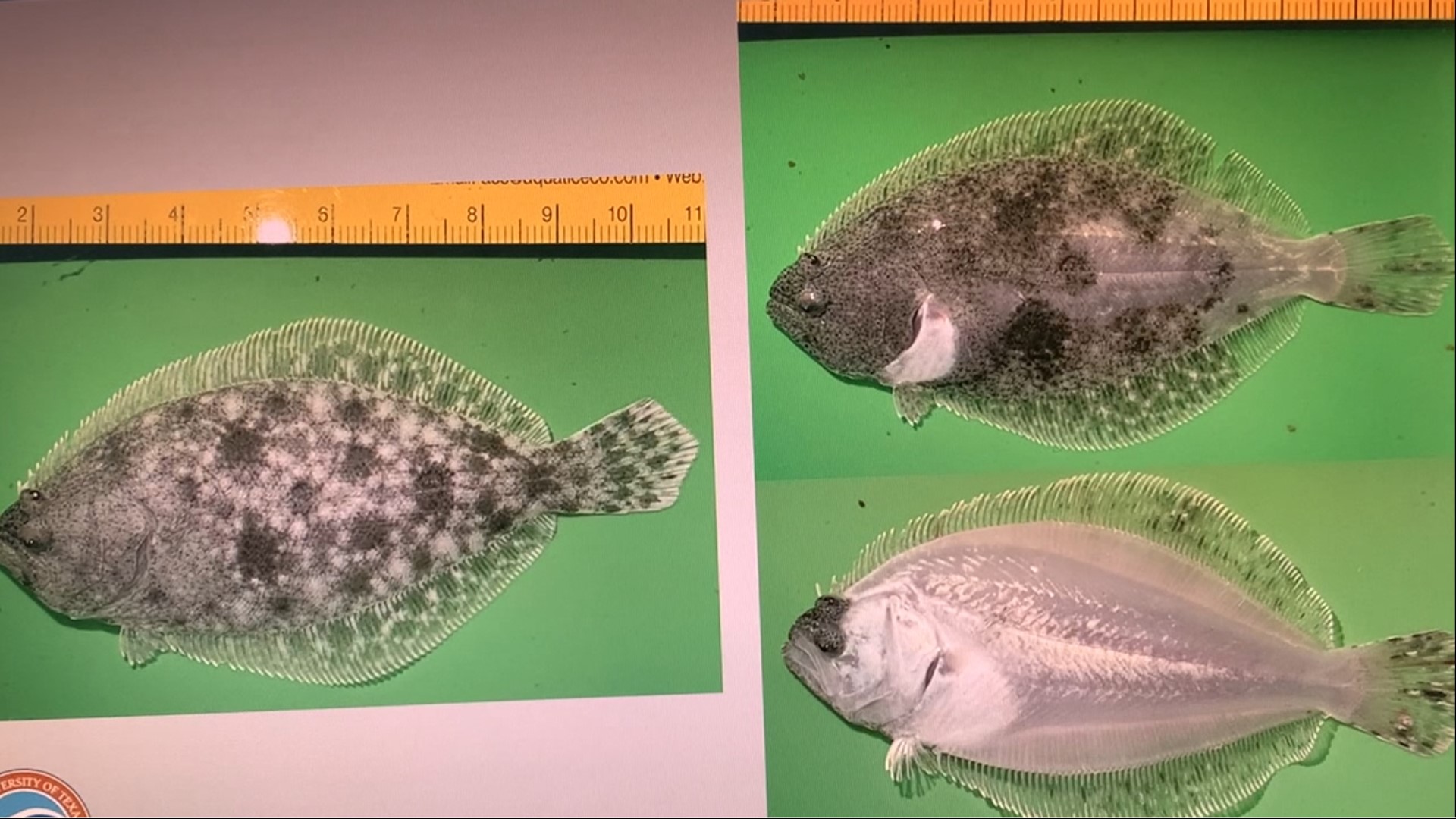CORPUS CHRISTI, Texas — Flounder is one of the most popular species of fish, and you can find them on the menu of nearly any restaurant in our area.
That, in spite of the fact that southern flounder populations have been declining over the past several decades.
Now, UT-Marine Science Institute scientists are working on a $100,000 grant to help the state parks and wildlife hatchery produce more flounder to stock in our waterways.
UT-MSI and Port Aransas researchers here are trying to figure out why some of the flounder being raised by the Texas Parks and Wildlife officials over in Flour Bluff don't have enough pigmentation to survive out in the wild.
Without that pigmentation, they are no longer camouflaged -- the young flounders are easy targets for other fish and crab.
"Here is a bunch that we have grown up from eggs,” said UTMSI Fisheries and Mariculture Lab Director Lee Fuiman. “They are probably about two months old and you'll notice that about a quarter of those individuals have no pigmentation you can see it here, here, here."
At the fisheries and mariculture lab, there are flounder in these tanks of varying ages.
Fuiman pointed out that this research project is going to last for a year, saying it's going to be a thorough study on why about a one-fourth of the flounder born in hatcheries end up with little-to-no camouflage.
"The lack of pigmentation may be natural -- we just don't know,” he said. “If it does occur in nature, those individuals will die right away, because predators woke up with them up so we may never know whether this happens in nature or not. But, it is clearly something that happens when you produce fish in a hatchery."
Cambria Miller is a research assistant here and gave some insight on what may be going on with the fish.
"We think that, you know, the diet is causing them not to produce the pigment properly and this study is going to help us figure out exactly you know hopefully what's happening there," she said.
Leigh Walsh, another research scientist on the project, said the institute has had great luck with the flounder spawning in the lab, and have figured out how to optimize the larval fish’s survival.
"I think it's amazing to help with the flounder populations, and to help with the survival and the enhancement program of Texas Parks And Wildlife and the research that we're currently doing here,” she said.
Fuiman believes genetics and the environment may both be to blame for the lack of pigmentation.
He hopes by the end of the year this study will either prove or disprove I believe.

